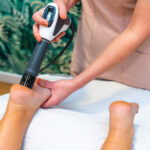The Effects of Mandatory Firearm Safety Training
Mandatory firearm safety training is meant to lessen the chance of firearm injuries and deaths. It also prevents gun violence by addressing the root cause of gun violence.
Some would argue that mandatory firearms safety training is not effective because it doesn’t address the root cause of gun violence. Some suggest that it does little more than simply teach people about guns and how to handle them safely. But, this is not true as they are trained on how to deal with situations that might arise in case they encounter an armed person or suspect, rather than how best to avoid situations where guns may be present in general.
Mandatory firearm safety training is a common practice in the United States. There have been at least 16 states that make this mandatory and only 3 states do not require it. Firearm safety training in these 16 states typically takes place in schools and at gun ranges.
The effects of mandatory fire arm training vary from state to state which means that the regulation cannot be universally applied. States like New Jersey, Connecticut, and Illinois have designated time for such training while other states like Wyoming and Montana mandate that the firearm safety training be done by law enforcement or other professionals.
Mandatory firearm safety training can build safe gun handling skills for children, teens, adults, and senior citizens who may own firearms.
The Effects of Mandatory Firearm Safety Training on Gun
Many people are unaware of the effects of mandatory gun training they go through. The training is usually based on what can happen if someone else has access to their guns. Some states require gun owners to take mandatory safety courses for their guns, but these courses are not always effective in preventing gun-related violence.
Some experts believe that mandatory firearm safety training will decrease the number of firearm-related deaths and injuries by creating a culture of safety around firearms.
Mandatory firearm safety training may reduce the number of firearm-related deaths and injuries by creating a culture that encourages responsible firearm use.
A rifle is a weapon that shoots bullets with speed and accuracy. There are many different types of rifles because they come in many shapes, sizes, and levels of power. The basics of these different types as well as some basic safety rules for using rifles in general.
The Role of Safety Training in the Modern Law Enforcement Marketplace
In today’s world, the world of law enforcement is changing. Today, law enforcement agencies are seeing a need to train their officers more for the high-speed and high-stakes environments that they now often work in.
In order to provide that training, many agencies have begun to use virtual reality simulations. This allows officers to practice scenarios without actually carrying out a potentially dangerous action. This can make a big difference in providing officers with the right training and experience needed for the demands of their new jobs within this evolving environment.
Safety trainers can also make an impact by providing “realistic” training scenarios as well as by using simulations as part of their curriculum – as opposed to just relying on role playing as an educational tool.
What is the Safety Training of Different Rifles and what do they entail?
The safety training varies with the type of gun, manufacturers, and government regulations regarding firearms.
The safety training for different rifles may vary with the manufacturer as well as its design. For example, modern bolt-action rifles such as the Ruger Model 77 MK II rifle have a two-stage trigger mechanism that can be engaged by pulling back slightly on an exposed lever near the trigger guard, also referred to as the “two-stage” or “two-stage match” trigger (or sometimes simply “two-stage”).
There are ways to engage what is commonly called single action mode:
1) When manually pulling back on this exposed lever;
2) When pressing in on top of this exposed lever;
The primary use for rifles is for hunting and target practice. However, the rifle safety training course should provide you with all the information you need to properly operate a rifle and follow all gun safety rules.
What are The Safety Training of AR -10 rifles?
These days you can easily purchase assembled AR-10 rifles which are the most popular hunting rifle in America. It is also known as “The Gun” for its popularity among gun enthusiasts. The safety training of the rifle, however, has been a topic of debate about its effectiveness.
Gun charge lawyer specializing in immigration law navigate complex legal landscapes for clients facing firearm-related charges. These legal professionals possess expertise in both criminal defense and immigration matters, ensuring comprehensive representation. With a nuanced understanding of how gun charges can impact immigration status and potential deportation risks, they adeptly craft strategies to protect their clients’ rights and immigration status. By providing diligent advocacy and tailored legal solutions, gun charge lawyers specializing in immigration law offer crucial support to individuals navigating the intersection of criminal and immigration law.
The Safety Training of AR-10 rifles
The safety training for this firearm is designed to stop any accidental discharge that could result in injury or death. There are two primary safety controls that are used to prevent accidents:
1) The trigger lock. This prevents the firearm from being fired by anyone other than authorized personnel.
2) The hammer block safety (HBS). This prevents the firearm from firing when it’s hammer is down and cocked.
While working with a rifle, safety is of utmost importance. If you fail to follow the safety guidelines and instructions, it can lead to an accident. Here is a list of safety rules for different rifles:
1) Before taking out your rifle, look and make sure that no other person is in the firing range or within 50 feet of your target
2) Check that your target is clearly visible
3) Look for any obstacles in the way when you are about to load your rifle
4) Make sure that you are using correct ammunition with rifle, else you might experience an accident
5) Make sure that you are using correct scope for your rifle
6) Always wear eye protection when shooting at targets
7) Always keep ear protection on when shooting at targets

















